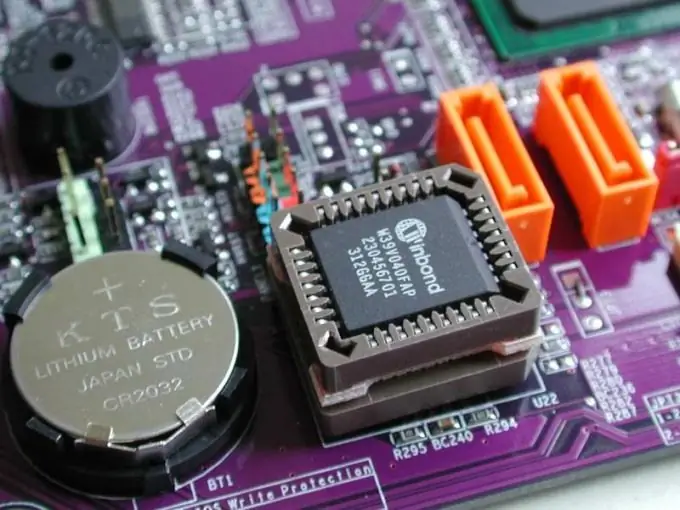Often, many computer users face the problem of updating the BIOS firmware. It occurs when you buy a new device with which your motherboard software cannot work due to lack of data. Updating the BIOS firmware resolves this issue by adding the necessary information about the new device to the motherboard software. Contrary to many opinions, updating the BIOS firmware is a simple process that even a beginner can handle.

It is necessary
USB, CD, DVD media
Instructions
Step 1
To get started, go to the official website of your motherboard manufacturer (www.asus.com, www.gigabyte.ru) and download the necessary firmware files specifically for your motherboard. Usually, these files are a self-extracting archive consisting of the BIOS itself and a flasher program - a flasher.
Step 2
Also, before writing the firmware files to the usb media, do not forget to format it correctly. For this purpose, use the USBFormat.exe program. Select FAT for media up to 4GB or FAT32 for media over 4GB, check Quick Format. After that, copy the BIOS files to your flash card.
Step 3
The next step is to reboot your system and enter the BIOS (press the Del key; if it fails, then read the instructions for your motherboard). After entering the BIOS, find the utility responsible for updating the system. In Gigabyte motherboards, this program is called Q-Flash. To start it, find the line Update BIOS from Drive in the BIOS, click it, then select your media with the firmware files and wait for the update to finish (about 2-3 minutes).
Step 4
Also, in some motherboards, for example, ASUS, it is possible to update the firmware without entering the BIOS. To flash your ASUS motherboard, use the built-in EZ Flash utility. To enter this program when you restart your PC, press Alt + F2. After notification, insert the previously prepared flash card. The utility will ask for the name of the firmware file - enter it (for example, Asus123.bin), continue the update process by pressing the Y key (short for "yes") when prompted. After a successful BIOS update, your PC will reboot.
Step 5
After flashing the BIOS, test the stability of your system. Your PC should behave as usual, without changes, otherwise, in order to avoid future problems, download the previous version of the BIOS and do the same manipulations for flashing the motherboard.






